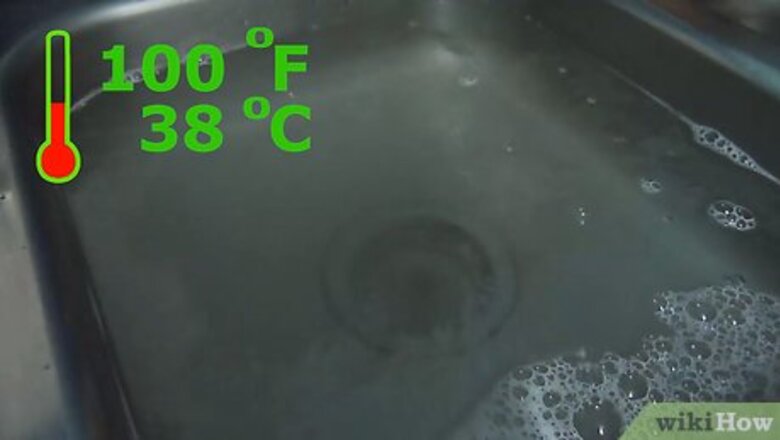
views
Cleaning with Soap and Water

Fill the sink with warm water. Be careful to keep the water lukewarm (about 100 degrees F/38 degrees C) and not scalding. You don't want to burn your hands!

Add two to three drops of gentle dish soap. Look for soaps that contain as few ingredients as possible. Natural or eco-friendly soaps are a good choice. Avoid soaps that contain bleach or other harsh chemicals. These will damage the copper.

Wash the kettle. Use a soft cloth or sponge to remove dust and dirt from the kettle. Rub gently, going in the direction of the "grain" of the metal.

Rinse. Run warm water over the kettle. If you choose to use a sprayer hose, turn the water pressure down. Any remaining dust or dirt should come off easily.

Dry. Rub gently in a circular motion until no water remains on or in the kettle. Make sure your towel is soft and free of lint.
Cleaning with a Vinegar Solution
Make the vinegar solution. Pour equal amounts of vinegar, salt, and lemon juice into a mixing bowl. Stir to combine thoroughly. The salt must be dissolved. If your kettle is made of especially fragile copper or has a lacquered surface, omit the lemon juice. Its low pH might damage these surfaces.
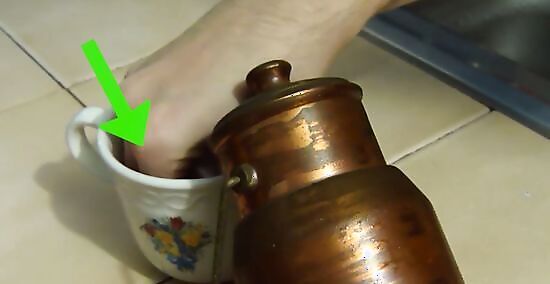
Dip a clean, soft cloth into the solution. Allow the cloth to soak up the solution completely. This will ensure that the kettle is cleaned thoroughly.

Remove the cloth from the soak. The cloth should be saturated but not dripping. If it is dripping, wring it out into the mixing bowl.
Rub the kettle with the soaked rag. Rub gently in sections, using circular movements. Make sure your movements are with the grain of the metal. You can also rub the kettle with a half a lemon that's coated with salt.
Rinse. Use warm water for rinsing off the cleaning agent and grime. Simply put the kettle in the sink, and allow the tap water to run over the surface.
Dry thoroughly. Use a soft dry cloth or a paper towel. Finish the cleaning, and dry the kettle.
Cleaning with Buttermilk or Sour Milk

Fill the kettle with boiling water. The heat from the boiling water makes it easier to clean the kettle's exterior quickly. Use caution to avoid burning yourself. Metal transfers heat to the surface very quickly.

Apply buttermilk or sour milk. Dip a sponge or cleaning cloth into the buttermilk or sour milk. Make sure that the sponge or cloth has a smooth texture that will not scratch the surface of the kettle.
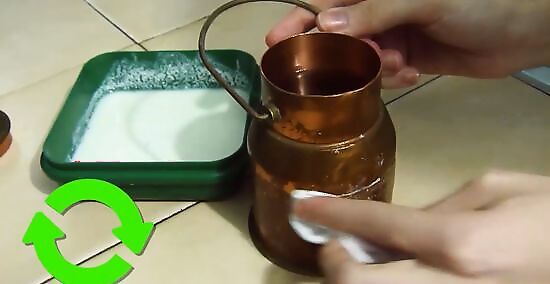
Polish the exterior of the kettle. Rub the cloth or sponge gently over the surface. It is best to run in a circular motion with the grain of the metal. This will clean away blemishes and return the shine to the kettle.
Cleaning with Ketchup
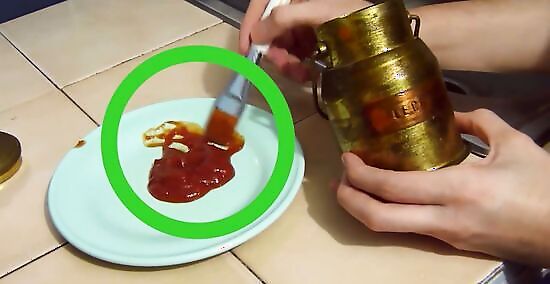
Smear the kettle with tomato ketchup. Use a paintbrush or cloth to apply the ketchup to the surface of the kettle. Make sure the texture of the bristles or cloth is smooth. Otherwise, you could scratch the kettle.

Leave the ketchup on the kettle for half an hour. Ketchup contains acetic acid, which reacts with tarnish to dissolve it. Although some acids can damage copper, acetic acid is weak enough to pose no threat.
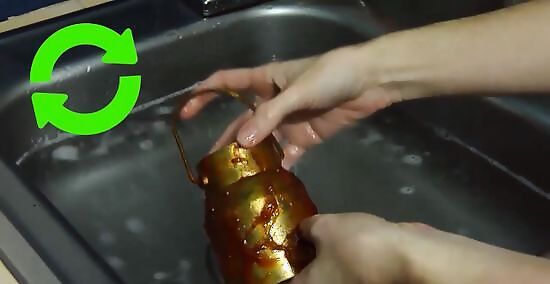
Wipe off the ketchup with warm soapy water. Use a smooth cloth or sponge, and move in the direction of the grain of the copper to avoid scratching. The kettle should look marvelously clean again.

















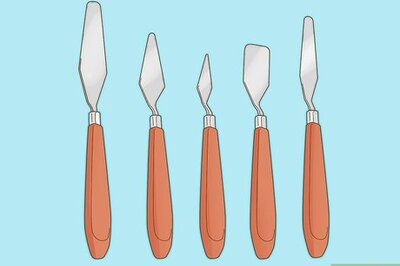


Comments
0 comment